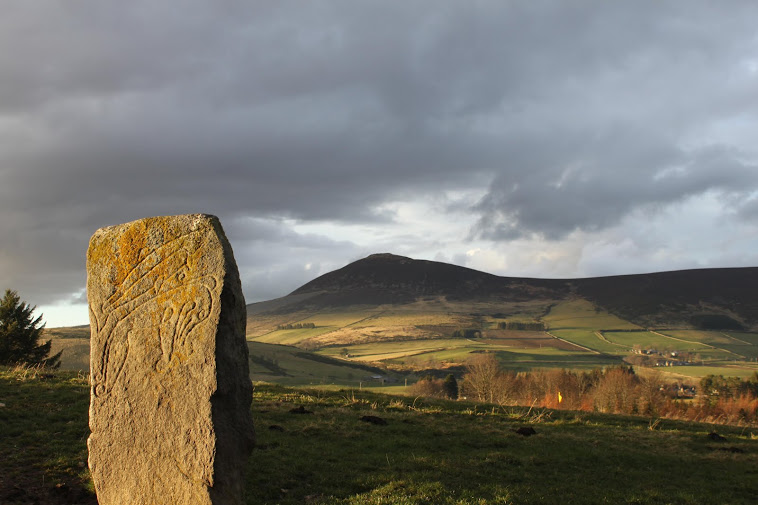On 11 March 2014, the Centre welcomed Martin Cook (AOC) to discuss ‘Recent work on Pictish barrows’ and Dr Gordon Noble (Aberdeen University) to discuss ‘An update on Rhynie’. This seminar was hosted jointly with the First Millennia Studies Group at the University of Edinburgh. Below is this listener’s brief summary of the lectures.
Martin Cook began proceedings by discussing AOC’s recent work at Kinloch, five miles west of Meigle. The location was not immediately favourable for exacavation but nevertheless, they discovered instantly recognisable Pictish barrows: two large square barrows and two large round barrows. One of the round barrows measured 8.8m by 9m. Skeletal remains were found in some of these barrows, the bodies lying on their backs with heads facing west. No contemporary artefacts were uncovered. Radiocarbon dating showed the two large round barrows date to between c. 381-c.550.
Discussion then shifted to an excavation at Greshop in Forres where three square barrows were discovered, with one large enclosure measuring 25m by 24m. No skeletal remains or artefacts were found at this site. Martin could only speculate if the skeletal remains found at Kinloch were a family. Nevertheless, he could confirm that the site was short-lived, with activity for 200 years at most.
The second speaker, Dr Gordon Noble, discussed excavation work at Rhynie in Aberdeenshire. Rhynie is said to mean ‘a very royal place’ and Dr Noble suggested that the archaeological evidence was beginning to match with this. The Craw Stone monument (pictured below) sits within a complex landscape featuring other monuments including palisades and timber buildings. The timber used to construct the palisade (which was 60m across) may have been imported from elsewhere. The site also features two ditch defenses and chronologically, these seem to be earlier than the palisade. Near the centre of the site, there is evidence for a large hall made from planks.

In 2011/12, shards of a Roman amphora, dating to c. 600, were found at Rhynie. Similar pots have been found at other high status royal sites across Europe; in Scotland, these are limited to Whithorn and Dumbarton. In 2012, the team found an axe-headed pin–their ‘star find’–which is very similar in appearance to the axe the ‘Rhynie Man’ carries (both pictured below). Dr Noble suggested this may have been a depiction of a ceremonial axe used to sacrifice cattle. The pin features an animal head biting down on the blade, with a curved tail sweeping down the shaft.

In 2013, the team excavated a projecting ditch at the entrance of the site. Dr Noble compared this to Roman camps which had similar features intended to prevent a direct charge. While the site at Rhynie was clearly not defensible, the ditch may have been a symbolic defense of the site. Dr Noble concluded by highlighting the successful community engagement enjoyed by the excavation team, which included a Pictish café selling Rhynie Man gingerbread!
The Centre seminar series continues next week, 18th March, with Prof Lynn Arbams’, ‘How British is Scotland? A Gendered Perspective’. This will be held in the Western Infirmary Lecture Theatre at 5.30pm. All welcome.


[…] Some Pictish discoveries […]